TAI Ahmedabad Chapter successfully hosts world textile meet

It is a landmark year for the Indian textile industry as the Textile Association of India (TAI) completes 75 glorious years of service to the industry since inception on April 9, 1939. Started with 126 founding members, today the association boasts of over 23,000 members all across India.
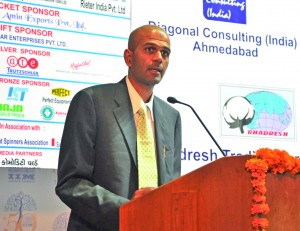
TAI’s Ahmedabad Chapter organized the first conference kick-starting the Platinum Jubilee celebrations by hosting a two-day international conference titled ‘Challenges facing Indian cotton- Back to Glory”. More than 800 delegates attended the conference which was jointly organized by the Textile Machinery Manufacturer’s Association (TMMA), Diagonal Consulting and supported by iNDTEXTb, the Gujarat Government and other associations.
TAI-Ahmedabad Chapter is one of the 27 units of TAI spread all over India. Started in 1948, the association has more than 4,000 members.
The conference was inaugurated by Mr. Saurabh Bhai Patel, Gujarat Minister for Energy and Petrochemicals, in the presence of Mr. Maheshwar Sahu, Principal Secretary, Industries and Mines Department of the Gujarat Government, Mr. Hrishikesh Mafatlal, Chairman and Chief Executive, Arvind Mafatlal Group, and Mr. D.R. Mehta, National President, TAI.
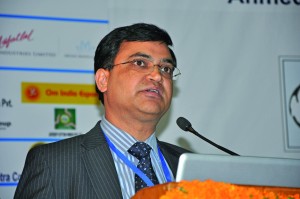
Mr. T.L. Patel, President, TAI-Ahmedabad, said on the occasion: “This is our first attempt to host an international conference on cotton industry. The conference has been well supported by global cotton exporters and trading houses, ginning and spinning machinery manufacturers and all those associated with the cotton world”.
Mr. Narendra Modi, Gujarat Chief Minister, said in his message: “Gujarat is the largest producer of cotton constituting over 35% share of the country’s production. Gujarat is strong in ginning both in terms of technology and production. Absence of spinning activity drives away 90% of cotton for value addition from Gujarat to other States. Gujarat has hence floated the concept of 5F-Farm, Fibre, Fabric, Fashion (garment) and Foreign (exports). Ahmedabad, once known as the Manchester of India, is now recognized by the Government of India as the Town of Export Excellence in Textiles. The Silk City of Surat is the largest exporter of man-made and filament fabrics which awaits international recognition by way of upgradation of technology and self reliance”.

The textile policy announced by the Gujarat Government in 2012 is aimed at restoring the glory of the State as a textile hub.
Mr. P.R. Roy, Chairman, Diagonal Consulting, and Conference Chairman, said: “The cotton industry is here to stay in India. It is 5,000 years old and it took 1,500 years by another country, which is Peru, to emulate what we had done 5,000 years back. The London School of Economics has come out with an excellent book on the history of global cotton industry and the role India played from 1200 AD to 1800 AD, in the 600 years before Britain mechanized the textile industry. The history reveals very clearly that in every field of cotton, whether it is Fiber, Spinning, Weaving, Processing, Printing and marketing of cotton products, it was India alone that dominated the world till 1800 AD. India was in the 3rd position sometime back as a cotton producing nation. Today we have moved to the second position, next to China. In the next 10 to 20 years India can become the largest manufacturer and exporter of cotton products globally”.
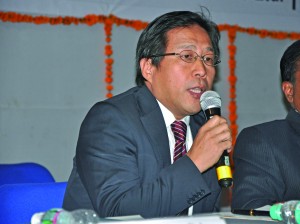
Gujarat is undoubtedly the largest producer of cotton in India, but beyond ginning, there isn’t much value addition. In 2012, the State Government unveiled a policy specifically to promote the textile industry. “The textile policy has received positive response from the stake-holders. The target was to enhance the spinning capacity by 25,00,000 spindles in the next 5 years. At the recently-held Vibrant Gujarat Summit, agreements were signed which can potentially generate investment for capacities in excess of 40,00,000 spindle capacity in Gujarat”, said Mr. Maheswar Sahu.
Mr. Hrishikesh Mafatlal expressed optimism about the future of cotton both in India and at the global level. King Cotton, he said, would remain the preferred fiber. India is uniquely positioned today to become a global player in cotton. Cotton and the textile industry in particular can become the single biggest driver to uplift millions of people from below the poverty line. He also stressed the need for sustainable growth and environment protection.
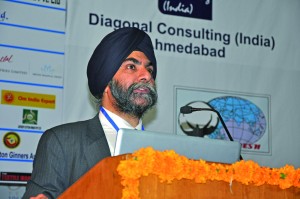
Mr. Mafatlal was quite confident about the future growth opportunities in cotton, thanks to the huge domestic demand. Arvind Mafatlal with a current turnover of Rs. 820 crores is targeting a turnover of Rs. 1,500 crores by 2016-17, and this is possible even at a steady rate of growth with all the available opportunities.
Earlier, Mr. Saurabh Bhai Patel, in his welcome address, exhorted the textile industry to take full advantage of Gujarat’s liberal and friendly industrial policy. He said: “Gujarat was once considered as the Manchester of India, but with the industry downturn many of our mills closed down. Now, with the efforts of all stake-holders, we will able to do wonders. The Government of Gujarat came out with a policy for textile industry in 2012. It is one of the most liberal policies prepared after due consultation with all stake-holders”.
Mr. Patel further observed: “Apart from being the largest producer of cotton, the biggest strengths of Gujarat are availability of water, power, land and skilled labor. The Government is further strengthening each of these factors to ensure that the State offers the most investor-friendly climate, thereby stimulating growth. We will be 10 years ahead of other States in terms of availability of power”.
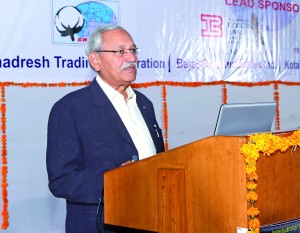
Gujarat is a power surplus State. It has a total capacity of 18,000 MW, out of which 4,000 MW is gas based and have been shut down due to non-availability of gas. The State still has 14,000 MW against the current demand of 11,500 MW. Gujarat is working on many new power projects to further increase the total capacity.
He particularly referred to the Southern States which are suffering from severe power shortage of power, and invited companies to set up their business in Gujarat or even consider moving their operations completely to Gujarat.
This is quite true in the context of the severe power crisis in Tamil Nadu. The textile industry there, in particular, has been hit very badly due to the power cuts of 10 to 12 hours every day. Most of the units are running on generators. This has eroded their profits completely. It is learnt from reliable sources that some of the major textile units in Tirupur have already purchased land in Gujarat for future expansion, he added.
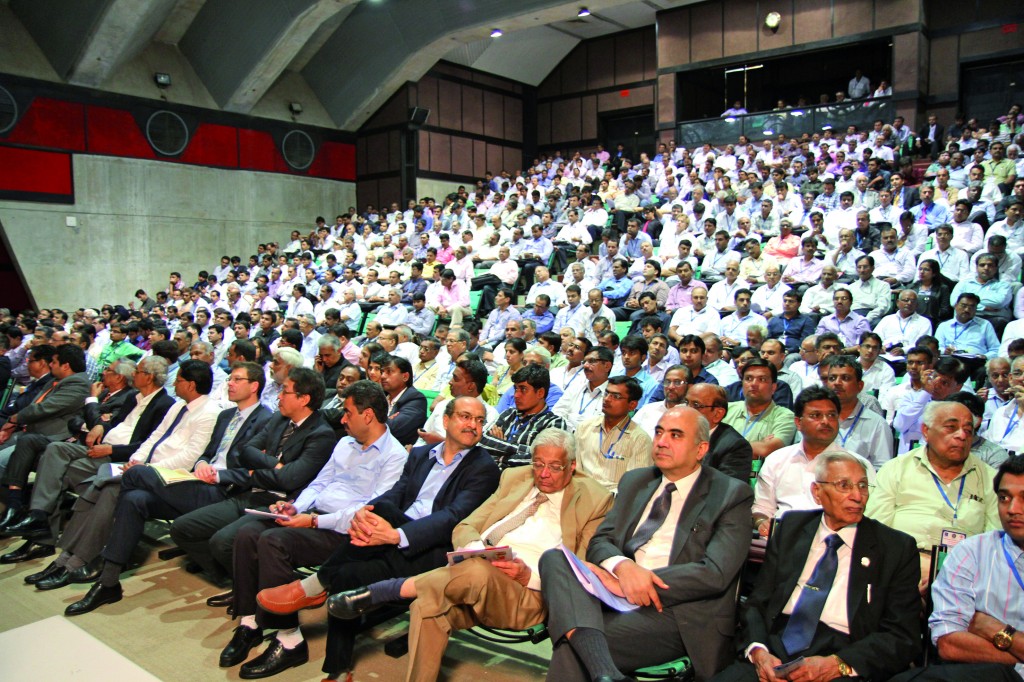
Mr. Prasanta Deka, Head of Rieter India, shared some interesting insights on the future of cotton. World fiber consumption as per BCI’s data shows that, upto 2030, cotton growth will be very good. Cotton has a great future for the next 25 to 30 years, followed by polyester. By 2030, 54 million tonnes of yarn will be produced globally compared to 41 million tonnes today.
Looking at spinning as a segment and the technologies used, Mr. Deka said that currently 76 per cent of the installed capacity is based on ring spinning, eight per cent compact, 15 per cent rotor and one per cent airjet spinning. By 2030, this could become 40 per cent in ring spinning, 18 per cent airjet spinning, 19 per cent compact and 23 per cent rotor spinning. Although blends would become inevitable, cotton will still remain No.1.